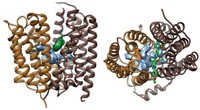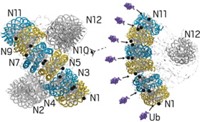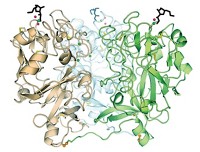Advertisement
Grab your lab coat. Let's get started
Welcome!
Welcome!
Create an account below to get 6 C&EN articles per month, receive newsletters and more - all free.
It seems this is your first time logging in online. Please enter the following information to continue.
As an ACS member you automatically get access to this site. All we need is few more details to create your reading experience.
Not you? Sign in with a different account.
Not you? Sign in with a different account.
ERROR 1
ERROR 1
ERROR 2
ERROR 2
ERROR 2
ERROR 2
ERROR 2
Password and Confirm password must match.
If you have an ACS member number, please enter it here so we can link this account to your membership. (optional)
ERROR 2
ACS values your privacy. By submitting your information, you are gaining access to C&EN and subscribing to our weekly newsletter. We use the information you provide to make your reading experience better, and we will never sell your data to third party members.
Biological Chemistry
Floppy linkers direct bacterial proteins
Length and disorder of the linkers are key to sorting between inner and outer membranes
by Celia Henry Arnaud
August 8, 2021
| A version of this story appeared in
Volume 99, Issue 29
Gram-negative bacteria such as Escherichia coli have a cell envelope consisting of an inner and outer membrane. About one-third of all E. coli proteins are localized in the cell envelope, with some proteins associated with the inner membrane and others with the outer membrane. The process by which this sorting happens is poorly understood. Jean-François Collet of Université catholique de Louvain and coworkers have now found that in E. coli, half the lipoproteins located in the outer membrane have a long, intrinsically disordered linker attached to their N terminus (Nat. Chem. Biol. 2021, DOI: 10.1038/s41589-021-00845-z). Both the length and the disorder of the linker help determine where the proteins end up, the researchers find. When synthetic linkers replace the natural ones, the proteins are still routed to the outer membrane if the synthetic linkers are unstructured and have more than 22 amino acids. With linkers that were only 10 or 18 amino acids long or had α-helical structure, the proteins instead accumulated in the inner membrane. The researchers don’t yet know whether disordered linkers play a similar role in other gram-negative bacteria. If so, the process of lipoprotein sorting could be a new target for antibiotics, the researchers say.





Join the conversation
Contact the reporter
Submit a Letter to the Editor for publication
Engage with us on Twitter